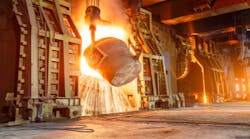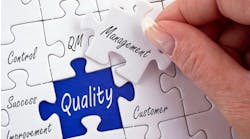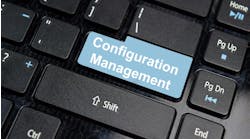How manufacturers can use volatile steel costs to their advantage
Steel costs have surged due to lagging production and rising demand during the post-COVID economic recovery. Rising costs are being passed down to distributors, who then pass them down to customers, in turn threatening ongoing demand with too-high prices.
In 2020, manufacturers faced their most challenging year as it relates to pricing and profitability, and 2021 is proving to be equally challenging, fast-moving and unpredictable.
How can manufacturers keep pace with uncertain, volatile market conditions while maintaining volume and margin?
Dynamic pricing is the answer. Manufacturers should seek an alternative to the status-quo approach to pricing amid volatile cost conditions. Instead, they should consider how leveraging AI and data science can address these increases in materials costs, while holding the line on margin and market share. Given the volatility of our times, dynamic pricing, in fact, might be the “new normal.”
Why has steel pricing surged…and how long will it endure?
Like most of the economy, US steel production has been hit hard by COVID lockdown measures. With factories closed and a reduced number of workers allowed on site for large parts of the past year, output has slumped. Even since COVID restrictions have eased, it has taken production longer to recover than demand, forcing prices to rise in a classic supply-demand scenario.
According to the Census Bureau, unfilled orders for steel in Q4 2020 reached their highest level in five years, and inventories were at a three-and-a-half year low. In February this year, the benchmark price for hot-rolled steel hit a 13-year high.
While there are some suggestions prices may have plateaued, there remains little confidence among industry insiders and investors alike. Barron's reports that the steel futures market has leapt 40% already in 2021 and does not expect it to slow down any time soon.
A poll of steel industry figures by S&P Global Platts, meanwhile, found that 44% expect to see domestic steel finished prices increase further in the next six months, with 22% anticipating price rises above 10%.
This level of volatility in steel prices is unprecedented in its scale. But disruption and price volatility itself is nothing new to the industry. The pandemic is just the latest event to shake US manufacturing. Trade wars, tariffs, supply chain disruptions, and rapid digitization all point to an economic environment where instability is the new normal.
The challenge for businesses is how to adapt.
Time for industry to rethink status-quo pricing
One of the biggest challenges businesses face when costs become volatile or rise sharply is the impact on their own pricing strategies. In fact, it’s more than that. Conventional pricing strategies are part of the problem.
The practice of setting and updating pricing throughout manufacturing supply chains remains largely an experience and gut-feel-based process, initiated as a reaction to various triggers and often handled over spreadsheets and email. When commodity prices like steel go up, speed and time are of the essence.
Reactive pricing strategies are slow, at least by the standards of the fast-paced digital world we now live in. By the time the decision is taken to increase prices, manually change the price lists, matrices, and customer agreements, brief the sales reps and inform customers, the market has already changed again.
Ideally, companies would have the means to immediately “rocket up” when costs rise sharply, and “parachute down” as costs begin to decline. This creates a bit of an arbitrage opportunity to take advantage of selling lower cost inventory at a higher price for a short period of time. This also creates an opportunity to realign customer pricing that is too high or too low by employing more surgical cost pass-through strategies. However, time-intensive and error-prone manual tools hamstring this strategy.
According to our internal research at Zilliant, when B2B businesses lack pricing strategies designed to account for rapid cost fluctuations, the unseen annual margin loss can be up to 6.58%. This loss of margin is a result of not having a fast, scalable means to update pricing granularly across the business when costs become volatile.
The good news—a portion of this margin loss can be recaptured.
The case for smart, data-led price optimization
The solution? As commodity prices remain volatile, manufacturers who are feeling the squeeze on their margins do have an often-unexplored option: price optimization.
Thanks to advances in AI and data science, the increasing availability and affordability of “smart” pricing software gives every manufacturing company an opportunity to digitally overhaul its pricing strategies.
Data is the key. Data-led pricing carries a number of benefits directly relevant to today’s volatile market environment:
● Speed: Modern data-analytics algorithms interrogate data sets and spot patterns that can be used to inform decision-making at phenomenal rates. Leading price-optimization and management solutions can automatically execute those decisions across multiple systems at similarly impressive speeds. When it comes to pricing, this means that price-change decisions and their implementation no longer need to be behind the curve. Smart pricing solutions can keep pace with the most rapid fluctuations in market conditions, which is a key part of what we mean when we talk about dynamic pricing.
● Specificity: Rather than taking the classic “peanut butter-spread” approach to passing on costs, wherein price increases are imposed uniformly across the board, companies can take a more specific, granular approach. AI, when used to optimize prices, can identify micro-segments, and then calculate the price elasticity of each micro-segment. By doing so, it’s possible to ascertain which customers are more and less sensitive to price changes for a given product and adjust pricing strategies for each. Additionally, you can predict the outcome of these strategies before publishing new prices to know, for example, how a 1% price increase will impact revenue and margin in one segment versus a 5% price increase in another. The result is a more optimized balance of price increases that don’t risk volume loss.
● Scale: Such platforms can aggregate vast amounts of data from unlimited sources without any impact on speed, as well as compare and collate disparate data sets to generate novel and unique insights at a granular level, which even the most experienced team of analysts couldn’t scale to with manual tools. For example, in the case of cost volatility, comparing in-house data sets with raw material cost indexes and competitive pricing to inform pricing strategies.
This provides a whole-business approach to pricing. Pricing changes don’t happen in a vacuum. Passing commodity-price increases onto customers has an impact on demand, reputation, sales volumes, and must be considered in the context of a competitive market complete with rivals making their own decisions and vying for your customers’ business.
Every executive knows this, but weighing all these variables and coming up with the best strategy is the hard part. This is where data shines. By analyzing data from multiple sources—internal ERP, CRM, transactional and order records, as well as external market indices—businesses get a complete and sophisticated picture of the predicted impact of pricing strategies.
This also helps to put an end to one-size-fits-all decisions. With so many variables and different scenarios that could play out, it’s counterintuitive in a volatile market environment to expect a single course of action or strategy to pay dividends for long.
AI can offer a menu of potential options and predict their outcomes, all weighted by probability and matched to different scenarios. Smart solutions can help businesses navigate through these options as the variables change, adapting as circumstances change.
Just as importantly, data can help businesses recognize that their market is not one homogenous whole. Certain segments of the market will be prepared to absorb price rises more readily than others. Smart, dynamic-pricing strategies take this into account and apply the right pricing approach to the right segment, all while maintaining the overarching goal of optimizing for margin or revenue.
Finally, data makes the seemingly unpredictable predictable. Technologies like predictive analytics and machine learning can provide a sense of consistency and confidence even in the most volatile of market conditions. They can’t tell you what the future will hold, but they can set out the probabilities and offer options for different scenarios in advance. Rather than always having to react to the market, businesses can be proactive in preparing themselves for all possibilities.
Volatility? No problem
The market volatility that manufacturing has experienced through COVID has been unprecedented. However, manufacturers can use the volatile commodity pricing they are experiencing to their advantage.
Businesses are increasingly recognizing that the margin squeeze resulting from status-quo pricing is not sustainable. They are seeing that their legacy pricing strategies cannot adapt, and something needs to change.
Manufacturers therefore have the opportunity to use this experience as a catalyst to adopt dynamic, digitized, data-led pricing strategies that are designed to protect and optimize margins in highly changing markets.
By Pete Eppele, Zilliant SVP of products and science



